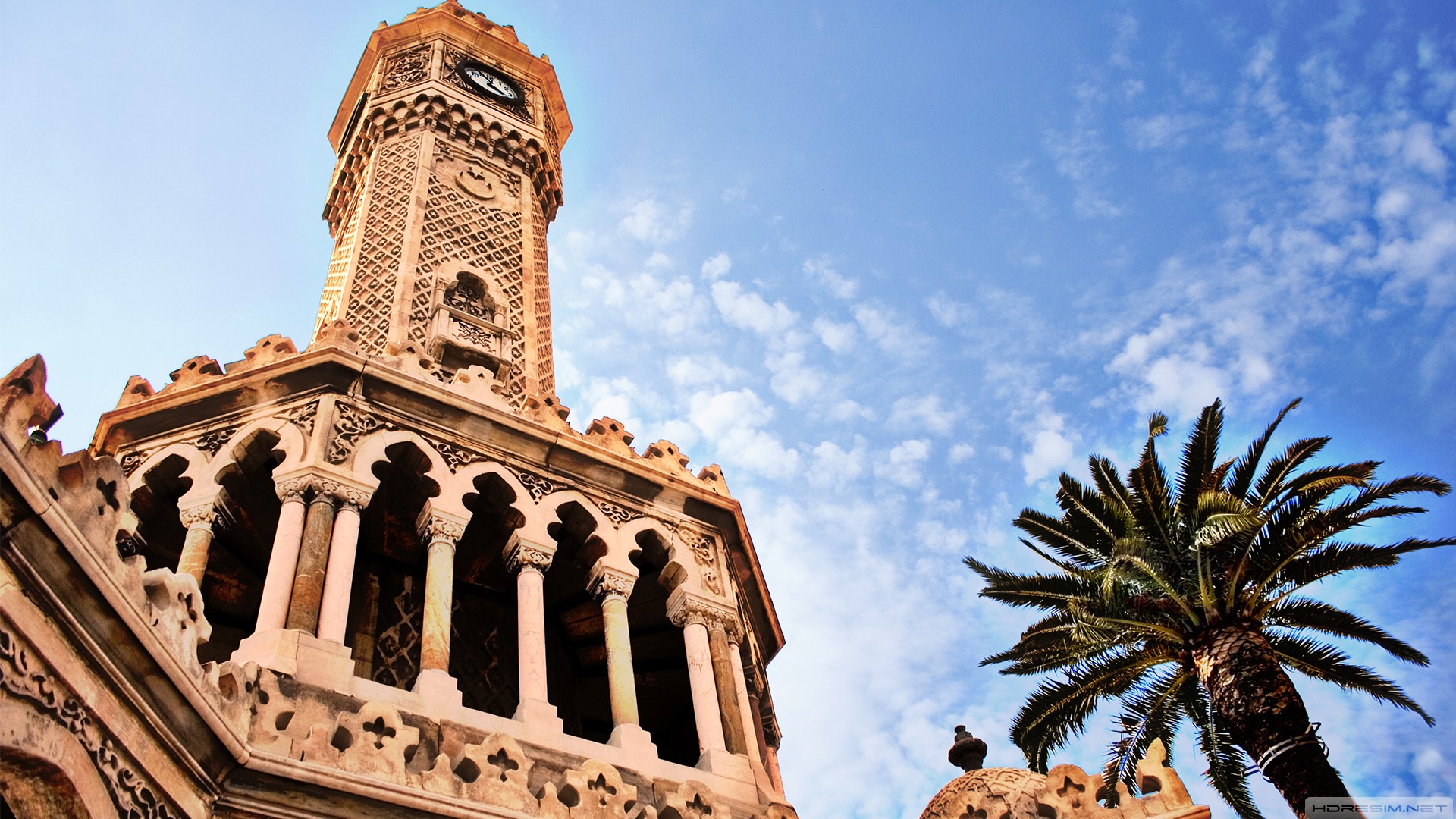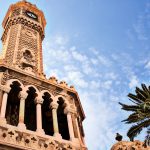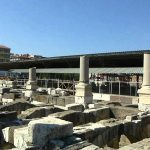HISTORY OF SMYRNA
Smyrna occupied a beautiful position below Mount Pagos at the head of a deep gulf. Although it was a significant example of an early polls in the archaic era, and a fine city in the Hellenistic period, virtually nothing survives from either phase of Smyrna’s history. The evidence has disappeared under the modern urban development of Izmir, the third largest city in Turkey. The only archaeological remains that can be seen are a few fragments of the archaic city and the well-preserved Roman Agora. However, the museum exhibits important sculpture and artifacts from the region that go back to the Bronze Age.
.
Greek colonists settled at Old Smyrna before the end of the second millennium BCE. They selected an easily defended site on a small peninsula connected to the mainland by a narrow isthmus between two good harbors. Fertile agricultural land nearby could support a growing population, and the Hermos River, connecting it to the interior of Anatolia, ensured trade.
.
Six streams flowed from Mount Pagos and other nearby hills into the Gulf of Smyrna. One of them was the Meles, which several ancient writers associate with Homer. Scholars have reached no consensus in identifying the Meles or the nearby cave frequented by the poet. However, George Bean argues convincingly that the springs that fed it are the same ones that flow, at a constant rate year round, to provide drinking water to Izmir today. They are now inaccessible behind walls. The assertion that Homer was born in Smyrna is challenged by the island of Chios, another reputed birthplace of Homer, but there is plenty of evidence that he knew the terrain of Smyrna well, Strabo mentions the Homerion, a heroon in the form of a peristyle house with a shrine and a statue of him.
.
Smyrna was one of the earliest Greek cities of Aeolis and a founding member of the Aeolian League. However, in about 800 BCE it was captured by Ionians from Colophon while the inhabitants were at a festival of Dionysus. The Smyrnaeans, cast out of their own polls, dispersed to other Aeolian cities but the Panionic League denied Smyrna’s new citizens the right to join them.
.
By the seventh century the small peninsula was tightly packed with houses. A Temple of Athena stood at the highest point; a girdle of walls surrounded it. The inhabitants were able to repulse an attack by King Gyges of Lydia, and they subsequently strengthened the defensive walls but these precautions proved insufficient in the long run. Gyges’s grand-son Alyattes II conquered and destroyed the city in about 600 BCE. He achieved that goal before the day of sophisticated siege engines by piling up earth, so high that some of it still remains on the site. Smyrna then broke up into a cluster of villages and did not recover before the Hellenistic era. Possessing little wealth and few ships, it never joined the Delian League.
.
When Alexander the Great came from Sardis to Smyrna, he rested after hunting by the temple of the two Nemeses on the slope of Mount Pagos (Kadifekale). He dreamed that the goddesses came to him, and told him to move the city to Mount Pagos. The oracle at Klaros, consulted by a Smyrnaean delegation, declared: “Thrice and four times happy will those men be who are going to inhabit Pagos, beyond the sacred Meles.” After the plan was executed in the early fourth century BCE under Alexander’s successors, Antigonus and Lysimachus, the new city prospered. Hellenistic Smyrna, a place of great architectural and scenic beauty, stretched from the shore of the bay and around the slopes of Pagos. It included a Temple of Zeus Akraios on its western slope and a theatre on the northern slope. A stadium occupied a ledge below the Acropolis and a temple of Cybele, the patron goddess of Smyrna, stood outside the city to the east.
.
During the era when the Attalids of Pergamon ruled most of the Aegean coast, the Smyrnaeans resisted their hegemony, instead forging a bond with Rome. As a means of appealing to the Romans for support, by combining diplomacy with religion, they initiated a new cult of the previously unknown goddess Roma and built a temple to her. The plan succeeded but after 133 BCE the Pergamene and Roman empires became one. Subsequently the cult of Roma, invented in Smyrna, flourished both in Rome and the provinces. During the Roman era, as the harbors of the two great trading cities, Miletus and Ephesus, silted up, Smyrna became the more powerful trading city but Ephesus was chosen as the capital of the Roman Province of Asia.
.
With a growing Christian community in the first century, Smyrna was named by St. John in the Book of Revelations as one of the seven churches of Asia. An early bishop Polycarp, ordained and installed by St. John, became a martyr in about 155 CE when he was burnt at the stake in the Stadium at the age of 86. A century later, under the emperor Decius, St. Pionius was burned as a martyr in the same place.
Source : Henry Matthews / Greco-Roman Cities of Aegean Turkey


